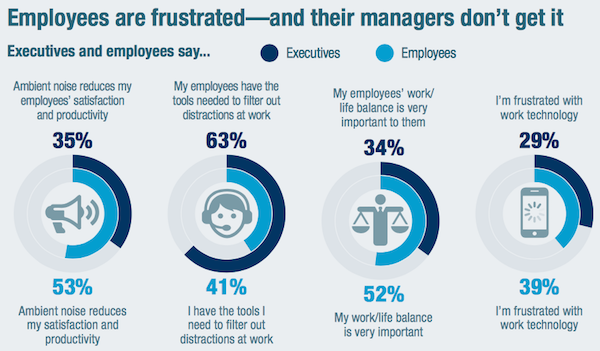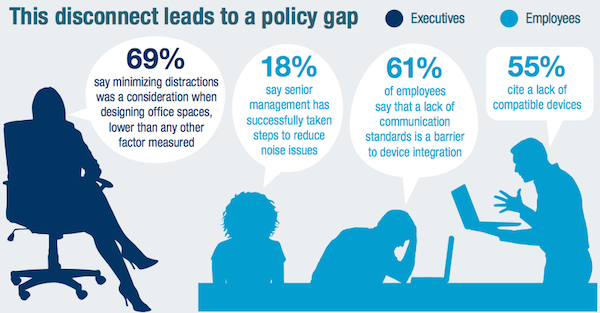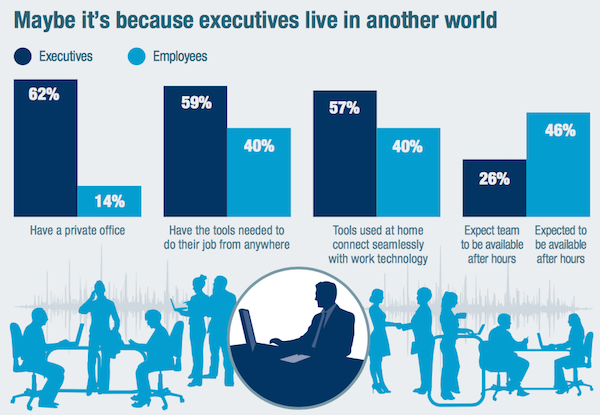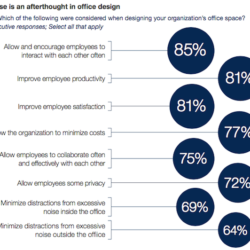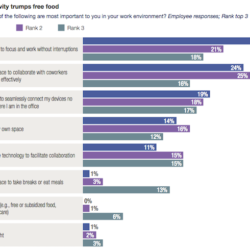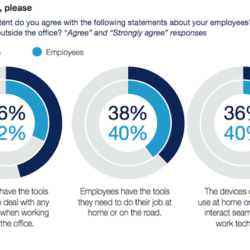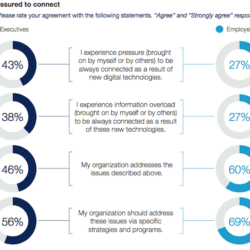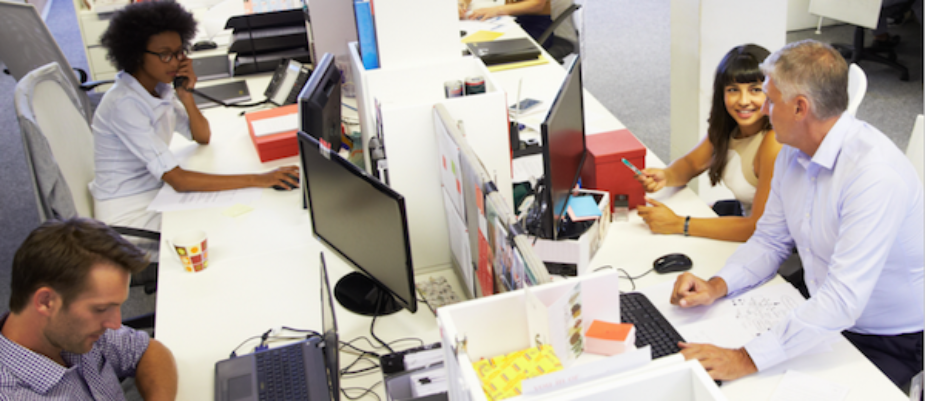
Oxford Economics in collaboration with Plantronics conducted the survey named “When the walls come down” on the effects of open workplaces on employees. The research studied what workers want from their office environments, and what managers need to do to enable the highest productivity and satisfaction from their people.
The survey supplied also good tips for the design of the new Plantronics office in Italy that will be inaugurated on April 6th.
Open-plan offices are meant to encourage collaboration and contribute to a collegial workplace culture, but they also come with serious drawbacks like noise and distraction.
The results show that threats to productivity and worker peace of mind are bigger issues than most executives realize, and most do not have the technology or strategies in place to deal with the problems.
Oxford Economics interviewed more than 1200 senior executives and non-manager employees from many industries and functional areas. These workers are from the United States, Canada, the United Kingdom, Germany, India, China, Australia, Denmark, Sweden, Finland, and Norway. The study also included detailed interviews with executives who are taking steps to deal with these business collaboration and productivity challenges in their open offices.
“Noise and distraction have a big impact on productivity,” says Edward Cone, Deputy Director of Thought Leadership and Technology Practice Lead at Oxford Economics. “These are issues that companies can address—but first they need to acknowledge the problem.”
The key findings were:
Workers just want to work. The ability to focus without interruptions is a top priority for employees when it comes to office design; access to amenities like free food is far less important.
Smart working is a work in progress. Employees are expected to be connected to the office all the time—but only 40 percent say the devices they use at home integrate seamlessly with their work tools.
Constant connectivity breeds compulsive behavior and could lead to burnout. More than one-third of employees say they use their tech devices primarily out of habit or compulsion, fear of missing out, or social pressure.
Managers don’t see the problems. Nearly two-thirds of executives say employees are equipped with the tools they need to deal with distractions at work; less than half of employees agree.
The report lists the following recommendations for employers, to help their employees work more productively, which is something the report says workers want to do:
Begin a dialogue with employees about what is working and what needs to change regarding office design, working remotely, and technology use.
Ensure employees have the tools and devices needed to work from anywhere
Give employees the quiet spaces, time and tools required to conduct focused work.
Encourage everyone to disconnect after hours, to find a balance between work and life.
Since employee satisfaction and productivity contribute directly to an organization’s financial success, the research concludes that a well-designed office space, integrated technology, and better work-life balance are well worth the effort.

